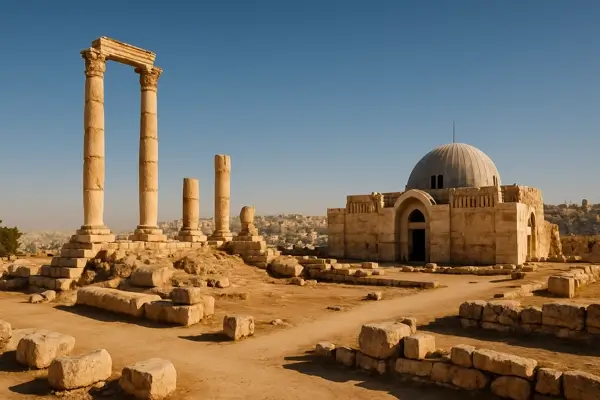
A Land of Ancient Civilizations
Afghanistan has a rich history that dates back thousands of years and is home to one of the world’s oldest civilizations. The country was once a key crossroads of trade and culture, connecting the East and West. Ancient cities like Balkh, Herat, and Kandahar have played crucial roles in the region’s history, and remnants of Greco-Buddhist and Persian cultures are still visible today.
The Birthplace of Major World Religions
Afghanistan is significant in the history of world religions, especially Buddhism and Islam. The ancient city of Bamiyan was once home to large Buddhist statues, which were destroyed by the Taliban in 2001. Afghanistan also holds an important place in the spread of Islam, which became the dominant religion in the region after the 7th century.
The Khyber Pass
The Khyber Pass is a historic mountain pass connecting Afghanistan and Pakistan. It has been a major trade route for centuries and a strategic military gateway. The pass has played a key role in history, serving as a route for armies, traders, and invaders, including Alexander the Great and Genghis Khan.
A Land of Mountainous Terrain
Afghanistan is known for its rugged and mountainous terrain, with the Hindu Kush mountain range running through the central part of the country. The mountainous landscape offers dramatic views and is home to various ethnic groups and nomadic tribes. It also presents challenges for infrastructure development and transportation.
A Diverse Ethnic and Linguistic Landscape
Afghanistan is a diverse country with many ethnic groups, the largest being the Pashtuns, followed by Tajiks, Hazaras, Uzbeks, and others. The country’s two official languages are Pashto and Dari (a variety of Persian), but many other languages are spoken, reflecting the rich cultural diversity of the population.
The Famous Khyber Pakhtunkhwa Region
Afghanistan shares deep cultural and historical ties with the Khyber Pakhtunkhwa region of Pakistan. The area is known for its Pashtun tribes, rich folklore, and a longstanding tradition of hospitality. Pashtun culture has a profound influence on both Afghanistan and Pakistan, especially in terms of language, customs, and traditions.
Home to the Famous Afghan Kebab
Afghan cuisine is known for its rich and flavorful dishes, with kebabs being a staple food. Afghan kebabs are typically made from lamb, chicken, or beef, and are marinated with spices before being grilled to perfection. Other popular dishes include pilaf (a rice dish), korma (a slow-cooked stew), and naan (flatbread).
A History of Political Struggles
Afghanistan has endured a turbulent political history, with invasions, occupations, and internal conflicts. From the British-Afghan wars in the 19th century to the Soviet invasion in the 1980s, Afghanistan has faced numerous challenges. The country has also experienced long periods of internal strife, including the rise of the Taliban in the 1990s and the subsequent conflict with international forces in the 2000s.
The Great Bamiyan Buddhas
One of the most famous historical landmarks of Afghanistan was the Bamiyan Buddhas, monumental statues carved into the cliffs of the Bamiyan Valley. These statues were once the largest standing Buddha figures in the world, standing at 53 meters (174 feet) and 35 meters (115 feet) tall. They were destroyed by the Taliban in 2001, but they remain an iconic symbol of Afghanistan’s rich cultural heritage.
A Rich Tradition of Poetry and Literature
Afghanistan has a long tradition of poetry and literature, with famous poets like Rumi, who was born in the city of Balkh in present-day Afghanistan, influencing literature worldwide. Persian literature, especially poetry, holds an important place in Afghan culture. Many Afghan poets and writers have contributed significantly to the cultural and intellectual landscape of the region.
A Strategic Location for Trade
Afghanistan’s location at the crossroads of Central Asia, the Middle East, and South Asia has made it a significant hub for trade and cultural exchange for centuries. Ancient trade routes, including the Silk Road, passed through Afghanistan, facilitating the exchange of goods, ideas, and technologies between the East and West.
The Wakhan Corridor
The Wakhan Corridor is a narrow strip of land in northeastern Afghanistan that serves as a geographical link between Afghanistan and Tajikistan. It is strategically significant because it separates Pakistan and China and is home to diverse ethnic groups, including the Wakhi people. The region is known for its breathtaking natural beauty, including stunning mountain landscapes.
Home to Rare Wildlife
Afghanistan's varied terrain is home to several species of rare wildlife. The country’s mountainous regions are home to the snow leopard, the Marco Polo sheep, and the endangered Afghan red bear. The wildlife is often found in remote and protected areas, although the ongoing conflict has made conservation efforts difficult.
The Afghan National Independence Day
Afghanistan’s National Independence Day is celebrated on August 19th each year, marking the day in 1919 when the country gained independence from British influence after the third Anglo-Afghan War. The holiday is a time of national pride, commemorating the country’s sovereignty and independence.
A Country Rich in Mineral Resources
Afghanistan is believed to have vast untapped mineral resources, including valuable deposits of lithium, copper, and rare earth minerals. These resources have the potential to transform Afghanistan’s economy, but the country’s ongoing security challenges have hindered large-scale mining operations.
The Flag of Afghanistan
The flag of Afghanistan features three vertical stripes of black, red, and green, symbolizing the country’s history, struggles for independence, and hope for a prosperous future. The national emblem in the center includes a mosque with a mihrab, symbolizing Islam, and the date of Afghanistan’s independence, August 19, 1919.



